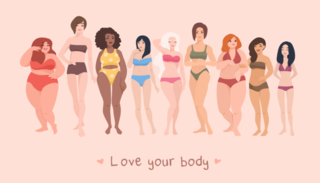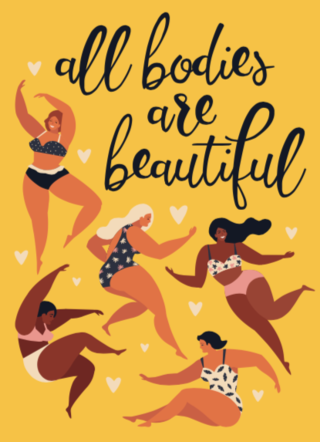Media
Body Positivity on Social Media Is a Work in Progress
How #BoPo is moving social media in the right direction.
Posted August 17, 2020 Reviewed by Lybi Ma
Social media is typically viewed with concern among parents as a pernicious influence on youth development. Teens see things a bit differently. A recent report from Common Sense Media indicates that teenagers rely on social media to connect with friends and anyone else they want to forge a connection with; it’s how they engage with the world.
One area of concern among parents is the artificiality and superficiality presented on social media; influencers look glamorous and products are available for purchase to help the rest of us keep up. Research examining the effects of beauty ideals on social media suggests they can be detrimental to body image. However, the body positivity movement, which is prevalent on social media sites, aims to challenge traditional beauty ideals.

The body positivity movement has caught on, in part, due to social media. The philosophy underlying this movement is that society’s messages about beauty are oppressive and unobtainable. Individuals are encouraged to challenge beauty ideals and welcome diversity in appearance and body size. Unique physical features are regarded in a positive light, not as deviations from what is considered attractive.
The spread of the body positivity movement is appreciated by body image scientists and clinicians who hope to promote positive body image – especially among vulnerable youth. The extent to which this movement is as positive as its name suggests has been called into question, however. In a recent study evaluating the body positivity movement on Instagram, psychologists sought to determine the extent to which posts using the body positivity hashtag (i.e., #bodypositivity) provided unequivocally positive messages about body image. The authors found that some of the body positivity accounts contained contradictory messages. Messages of self-acceptance can appear alongside or within posts promoting weight loss. Beauty and thinness are idealized even where diversity is praised.

It may be tempting to find this very discouraging; one step forward and two steps back. However, this study may cast light on the inherent complexity of what it means to appreciate diversity. After all, does accepting all bodies mean accepting bodies that are all sizes (even thin)? The authors found that 43 percent of the bodies depicted in #bodypositivity posts were of individuals living in larger bodies. This is much more representative of the average person than are the posts offered as “thinspiration” or “fitspiration.” These media representations of bodies that are average and obtainable may serve to prevent some of the body dissatisfaction linked to the idealized thinness most often portrayed.
It is also encouraging that this research found that inner positivity was the most common body positivity theme on Instagram. Inner positivity posts focused on strength, resilience, and not giving up. The messages were less about physical appearance and more about psychological assets such as courage. These are messages that all of us can use, regardless of how we feel about our bodies.


